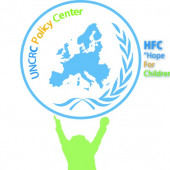Our website uses cookies so we can analyse our site usage and give you the best experience. Click "Accept" if you’re happy with this, or click "More" for information about cookies on our site, how to opt out, and how to disable cookies altogether.
We respect your Do Not Track preference.

New Zealand’s progress in child welfare recently came under international scrutiny by the UN Committee on the Rights of the Child (CRC). Information sharing, Predictive Risk Modelling (PRM) and Approved Information Sharing Agreements (AISAs) were some of the current developments assessed by the Committee.
The CRC is the body of 18 independent experts that monitors the implementation of the United Nations Convention on the Rights of the Child (UNCROC) in member nations. New Zealand signed up to the UNCROC in 1993.
In September, the CRC considered the fifth periodic report from New Zealand on how well it is supporting children’s rights in NZ.
New Zealand Government report
The New Zealand government report had highlighted information sharing as part of government efforts to curb the harm caused to vulnerable children. New Zealand noted the development of the Vulnerable Children’s Approved Information Sharing Agreement (AISA) to enable information to be shared to support the Government’s Vulnerable Kids Information System and the Vulnerable Children’s Hub.
The CRC receives member government reports, non-governmental organisation reports and other reports, and uses these to prepare a list of recommendations for the government of a country under scrutiny.
CRC recommendations for New Zealand
The CRC made a number of recommendations in relation to New Zealand:
Recommendations for improvement in privacy measures, predictive risk modelling and information sharing were as follows:
Right to privacy
20. The Committee notes the adoption of the Approved Information Sharing Agreement for Improving Public Services for Vulnerable Children in 2015 as well as the State party’s intention to use predictive risk modelling in the child protection system and recommends that the State party take all measures necessary to fully protect the right of the child to privacy, including by:
(a) Ensuring that any legislation enabling the collection, storage and sharing of personal information about children and their families include an explicit requirement to take into consideration the best interests of the child;
(b) Ensuring that the Privacy, Human Rights and Ethics framework governing predictive risk modelling takes in consideration the potentially discriminatory impacts of this practice, is made public and is referenced in all relevant legislation;
(c) Undertaking a child rights impact assessment of the implementation of surveillance for law enforcement and intelligence gathering purposes, with particular attention to eliminate potentially discriminatory practices based on ethnicity.
Access to appropriate information
21. While welcoming the State party’s efforts to improve access to internet in schools and the development of legislation and resources for children’s online safety, including the Harmful Digital Communications Act 2015 and the NetSafe Kit for schools, the Committee recommends that the State party:
(a) Expand access to internet and information to children living in rural areas;
(b) Ensure that children aged 14 to 17 falling outside the definition of “children” under the Broadcasting Standards Authority Television Code and the Advertising Standards Authority Code for Advertising for Children are adequately protected from information and material harmful to their well-being.
Further recommendations concerned background checks for professionals and staff caring for children - including establishing a national database to record all cases of violence against children:
Violence, abuse and neglect
(a) Promptly take measures to eradicate the use of violence and abuse of children in State care, including in the form of restraints and detention, and ensure that all professionals and staff working with and for children are provided with the necessary training and supervision, and are subjected to the necessary background checks; ………
(d) Establish a national database on all cases of violence against children in families, schools and institutional care, and undertake a comprehensive assessment of the extent, causes and nature of such violence;
(e) Regularly monitor and analyse the effectiveness of the Vulnerable Children’s Plan, the Violence Intervention Programme, and the National Child Protection Alert System and other policies and programmes against child abuse and neglect;
(f) Allocate sufficient human, technical and financial resources to Children’s Teams and other frontline services to adequately respond to reported cases of child abuse;
Response to the UNCROC committee
In response to questioning by the CRC, New Zealand had noted that an AISA provides a legal framework to facilitate proportionate and relevant information sharing to determine whether or not a child is vulnerable and whether a referral to a statutory response or voluntary response is required. Further, an AISA has in-built measures to protect a child’s right to privacy, and only enables the sharing of the most minimal information required.
In relation to Predictive Risk Modelling (PRM), New Zealand’s response noted there is no PRM system in operation in the New Zealand child protection system. Further research is underway - including a trial to test use of a predictive model to improve triage decision making. The Ministry of Social Development is in the process of developing a Privacy, Human Rights and Ethics Framework that will govern its operational use of predictive modelling.
Implications and what’s next
International scrutiny of government information sharing is a new thing. The CRC posed specific questions and the government responses are an important signal on how it proposes to promote and protect children’s privacy rights and interests.
Our Office is exploring new research on PRM and will continue to monitor information sharing developments closely.
Back